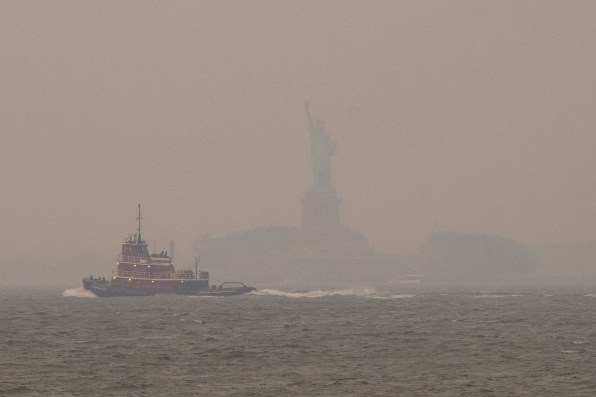This year, more than 5,100 fires have burned across Canada. They’ve sent smoke plumes around the world, blanketing parts of the East Coast in an eerie haze and even drifting over to Europe. They’ve burned 13 million hectares of land, or about 32 million acres, a size equivalent to the country of Greece. And they’ve already released one billion tons of carbon dioxide emissions into the air, according to one estimate—about the same as the global airline industry emits in a year, or a year’s worth of driving from more than 222 million gas-powered cars.
The 2023 Canadian wildfire season has been the worst on record. By the end of June, wildfires had already burned 19 million acres of land, shattering the previous record of 17.5 million acres burned in 1995, according to the Canadian Interagency Forest Fire Center (which has been keeping such records since 1983).
At the end of July, scientists from the Institute of Applied Ecology of the Chinese Academy of Sciences used remote sensing technology to estimate the emissions of those fires, announcing that carbon dioxide emissions from Canadian forest fires had already reached one billion tons. Wildfires also emit methane and nitrous oxide, greenhouse gases that cause more warming than CO2; researchers estimate the greenhouse effect of these other gases is equivalent to about 110 million tons of carbon dioxide.
The Canadian wildfires are also burning in permafrost areas, which refers to regions where the ground remains frozen for at least two years. When permafrost thaws, huge stores of organic carbon that were encapsulated there—from animal and plant materials—begin decomposing, releasing greenhouse gases.

The total carbon emissions that Chinese researchers estimated is confirmed by numbers put out by the European Union. This week, the Copernicus Atmosphere Monitoring Service (CAMS), part of the EU’s Earth observation program Copernicus, reported that between January 1 and the end of July, Canadian wildfires were responsible for 290 megatonnes—or 290 million metric tons—of accumulated carbon emissions. Carbon is different from carbon dioxide, and to convert carbon to carbon dioxide, per the EPA, you have to multiply it by 3.67. That means 290 megatonnes of carbon is about 1.063 billion tons of CO2 equivalent.
For their measurements, CAMS researchers use satellite observations that look at fire radiative power, or the thermal intensity and heat from active fires to estimate emissions.
That’s a record-breaking amount of emissions, per CAMS: 290 million metric tons of carbon is more than double Canada’s previous record for a whole year of wildfire emissions. That previous record occurred in 2014, when carbon emissions from Canadian wildfires totaled 138 megatonnes, or 138 million metric tons. But this year’s wildfire season isn’t even over yet. “As fire emissions from boreal regions typically peak at the end of July and early August, the total is still likely to continue rising for some more weeks and we will continue to monitor,” CAMS senior scientist Mark Parrington says in a statement.


